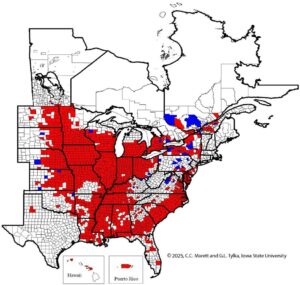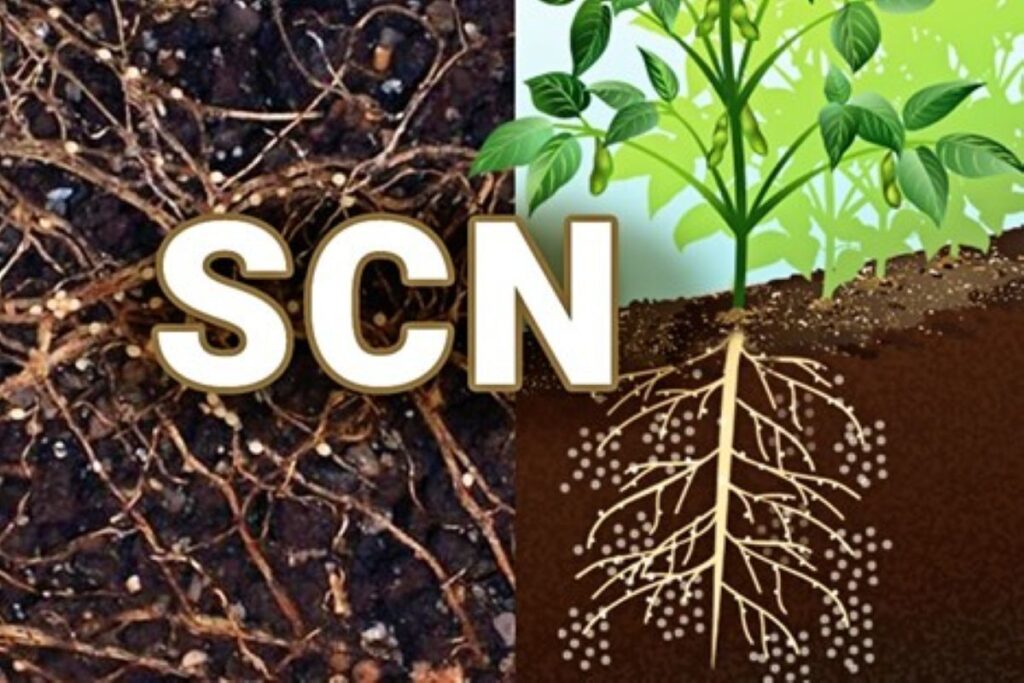By Rhonda Brooks
Reprinted with permission from Farm Journal

Red, white and blue are colors of patriotism in the United States, but a new map showing the presence of soybean cyst nematode (SCN) uses those colors in an altogether different way.
Soybean growers can take a quick look at the map provided by the SCN Coalition to tell whether the pest is in their counties, and thus, if they are in areas potentially at risk.
Specifically, red areas on the map indicate counties in each state where SCN has been found. Blue signals the newest counties or areas that the pest has moved into. White indicates counties or areas where SCN has not been confirmed, but they aren’t necessarily SCN-free.
Some states have SCN in every county. Consider the top two soybean producing states:
- Illinois has SCN in all (102) of its counties and 88% of all soybean fields.
- Iowa also has SCN in all 99 of its counties and at least 70% of all soybean fields.
“I tell my farmers there’s a three-out-of-four chance that any field they grow soybeans in has SCN,” says Greg Tylka, director of the Iowa Soybean Research Center at Iowa State University.
He says fields with low levels of infestation might show very few symptoms of damage, but it becomes more pronounced as populations climb.
“There’s stunting and there’s yellowing, but it won’t be uniform in the field. It’ll be patchy,” he says.
“Some indirect symptoms include areas of a field with poor weed control,” Tylka continues. “The soybeans might not look sick, but because of poor weed control, they are stunted, and the plants don’t close over as quickly.”


